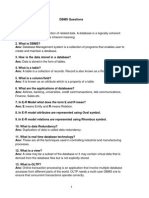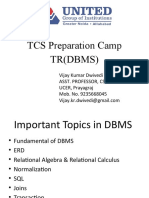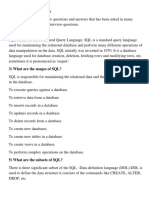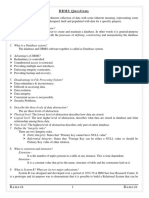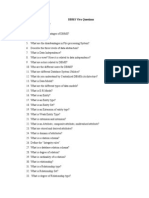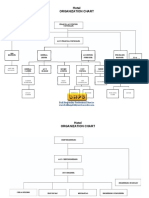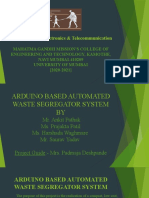0% found this document useful (0 votes)
27 views11 pagesDbms Interview Questions
The document is a compilation of common DBMS interview questions and answers, covering topics such as the differences between DBMS and RDBMS, types of DBMS, advantages, query optimization, and various database concepts like normalization, keys, and ACID properties. It also discusses relationships, concurrency control, database partitioning, and the differences between triggers and stored procedures. Additionally, it explains indexing, cursor types, and updates, providing a comprehensive overview for candidates preparing for DBMS interviews.
Uploaded by
keerthanaak8873Copyright
© © All Rights Reserved
We take content rights seriously. If you suspect this is your content, claim it here.
Available Formats
Download as DOCX, PDF, TXT or read online on Scribd
0% found this document useful (0 votes)
27 views11 pagesDbms Interview Questions
The document is a compilation of common DBMS interview questions and answers, covering topics such as the differences between DBMS and RDBMS, types of DBMS, advantages, query optimization, and various database concepts like normalization, keys, and ACID properties. It also discusses relationships, concurrency control, database partitioning, and the differences between triggers and stored procedures. Additionally, it explains indexing, cursor types, and updates, providing a comprehensive overview for candidates preparing for DBMS interviews.
Uploaded by
keerthanaak8873Copyright
© © All Rights Reserved
We take content rights seriously. If you suspect this is your content, claim it here.
Available Formats
Download as DOCX, PDF, TXT or read online on Scribd
/ 11





























